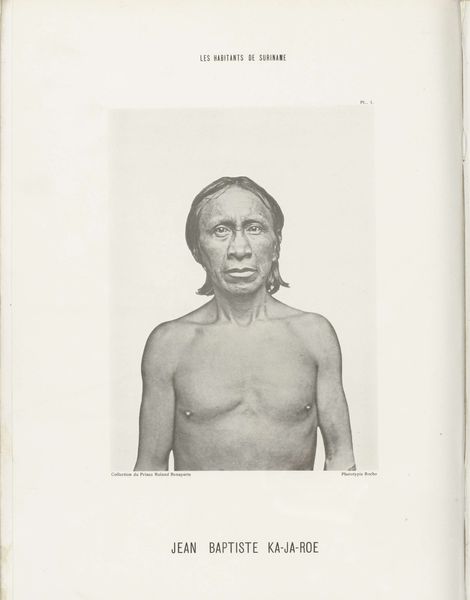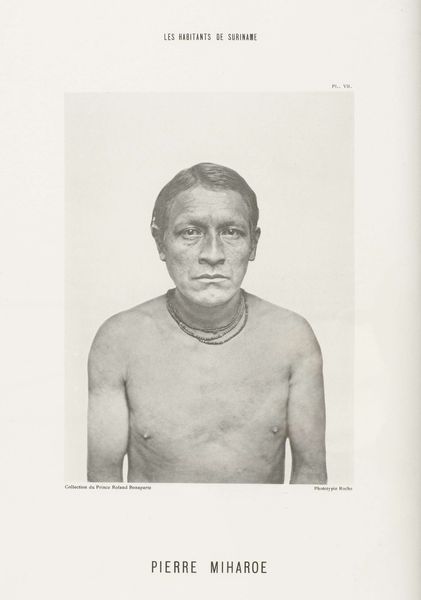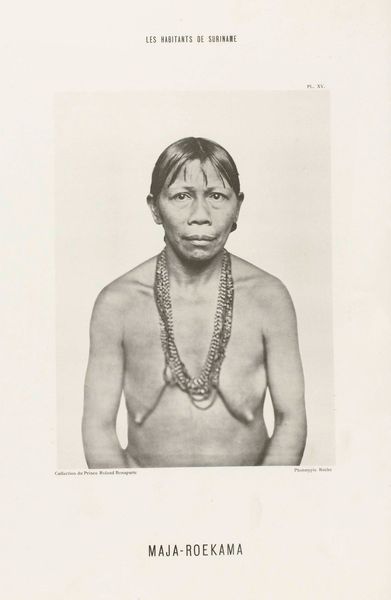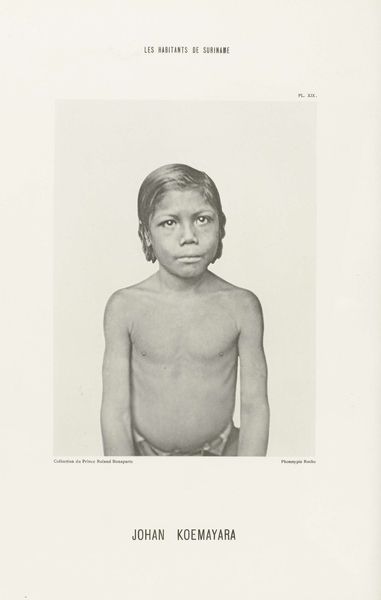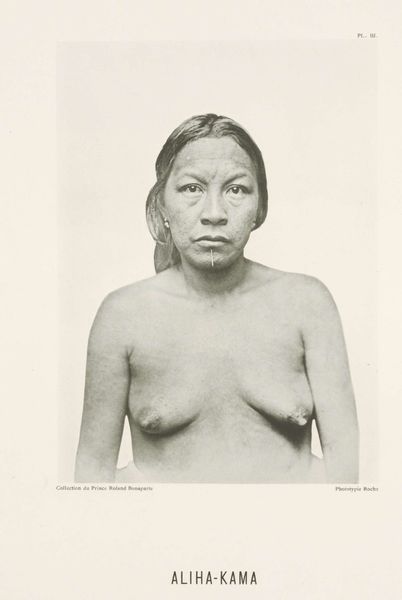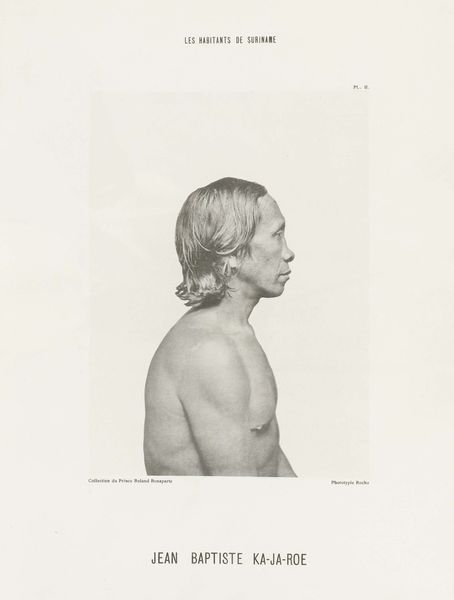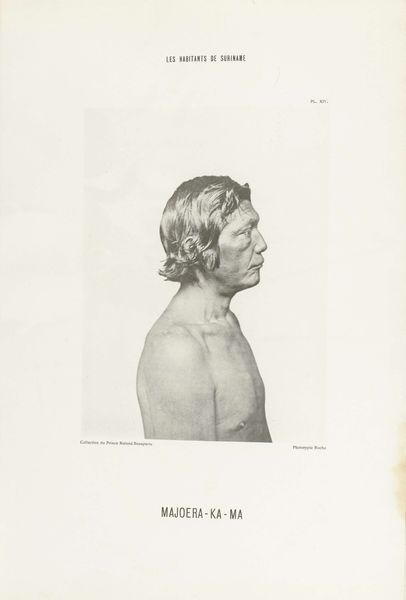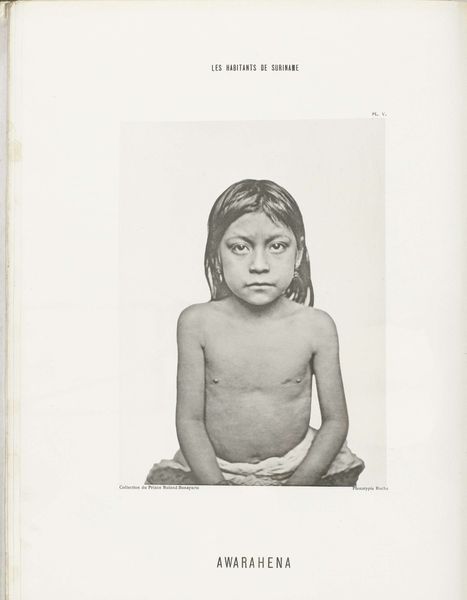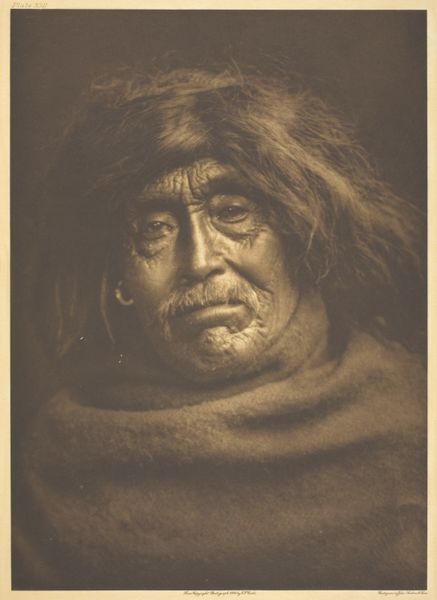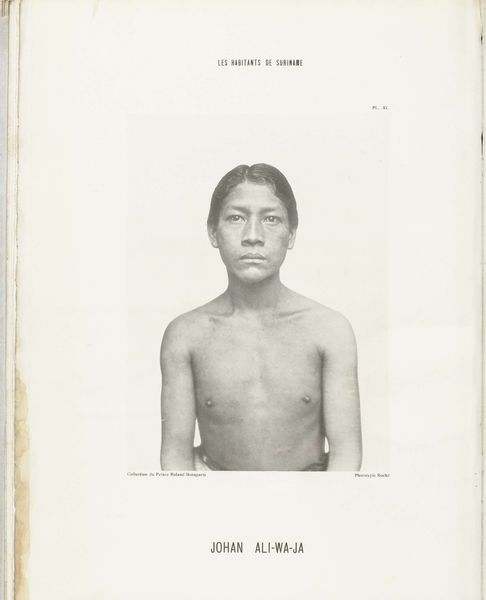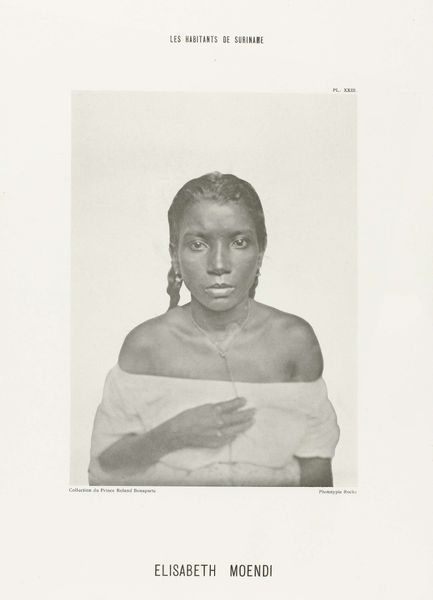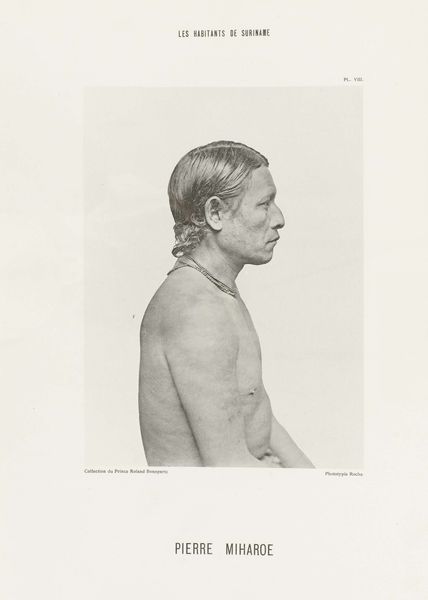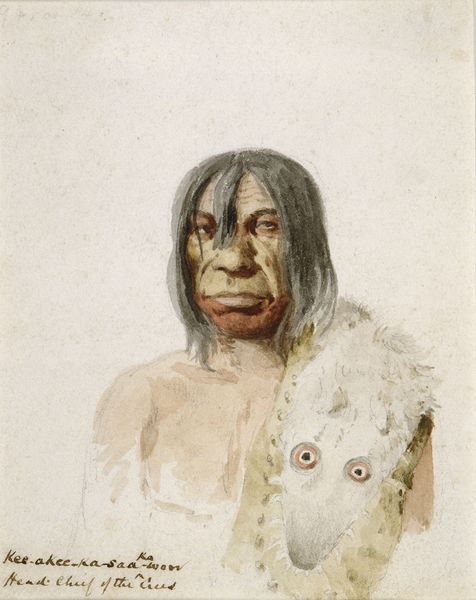
albumen-print, photography, albumen-print
#
albumen-print
#
portrait
#
photography
#
historical photography
#
albumen-print
Dimensions: height 238 mm, width 174 mm
Copyright: Rijks Museum: Open Domain
Editor: Here we have Friedrich Carel Hisgen's albumen print, "Portret van Majoera-Ka-Ma", created sometime between 1883 and 1884. The sitter's gaze is very direct; it makes me feel like I'm encountering him in a very particular historical context. How do you interpret this work? Curator: I see a portrait imbued with complex colonial power dynamics. In this gaze, I perceive a tension between documentation and exploitation, challenging our notions of portraiture itself. This image, like others from the period, served a pseudoscientific purpose within colonial regimes. What stories are silenced by the clinical approach? Editor: So you’re saying this isn't simply a portrait; it's a record that speaks to larger structures of power and control? Curator: Precisely. The act of photographing a person from a colonized territory was rarely neutral. How do we reconcile the artistic value with the fraught history embedded in the image? Where is Majoera-Ka-Ma’s own voice within this image? Editor: I never thought about the implications of anthropological photography like that. Curator: It’s crucial to interrogate these historical representations. Photography was wielded as a tool for classification, and, ultimately, subjugation. By analyzing Hisgen’s image, we can begin to understand the visual strategies employed to construct the “other” and how those strategies continue to resonate today. Editor: That’s a really powerful point. Thinking about who controls the narrative shifts the entire perspective. I will definitely look at these kinds of historical photographs differently going forward. Curator: Exactly! Keep asking those questions. Recognizing the silences can be just as informative as understanding what is being shown.
Comments
No comments
Be the first to comment and join the conversation on the ultimate creative platform.
